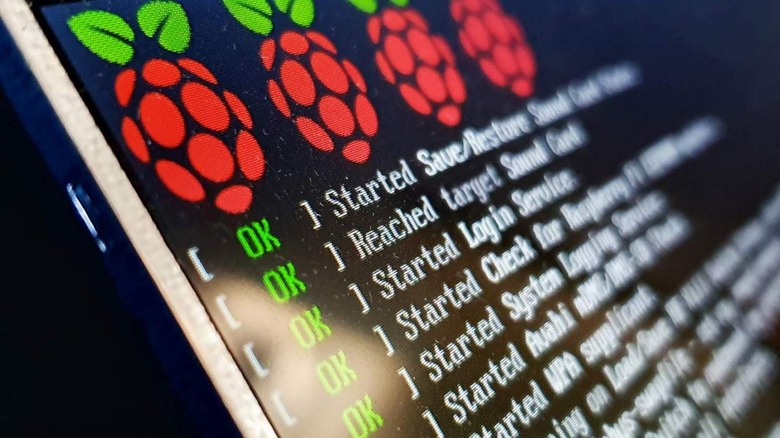Here's How To Update Your Raspberry Pi
Raspberry Pi computers are popular devices across a wide spectrum of users. The devices are inexpensive, easy to set up, and can be used for a variety of tasks. While the update process is a little different than Windows or macOS, it's a fairly straightforward process. For the uninitiated, the Raspberry Pi is an affordable and portable computer that's about the size of a credit card. Its website notes that it can be plugged into standard computer monitors and TVs and is compatible with a keyboard and mouse.
Raspberry Pi took the computing world by storm upon its introduction in 2012. A single-board computer (SBC), the Raspberry Pi was originally conceived as a way for students — especially those in developing countries where cost is a limiting factor — to learn about computers and how to program, according to the Borgen Project. The device's popularity skyrocketed as users the world over realized how versatile it was.
The SBCs have been used in robotics, for programming, as microcontrollers, home computers, and much more as TechCrunch has noted. In fact, the device has been used in many industries thanks to its' low power consumption and powerful performance, especially compared to its' cost.
However, keeping your device updated is critical to optimizing its performance. Here's how to update your Raspberry Pi.
Updating a Raspberry Pi
The Raspberry Pi runs Raspberry Pi OS, which is based on Debian Linux. As with most computing devices, its updates often contain security fixes that help protect your device and data. Because Raspberry Pi OS is based on Linux, the easiest method of updating will require using the Terminal, as opposed to the graphical-based software updates Windows or macOS provide, the device's website notes.
To update to the latest version of Raspberry Pi OS, follow these steps (via Raspberry Pi). First, open a Terminal window and type "sudo apt update" to retrieve a list of available updates. Then, type "sudo apt full-upgrade" to download and install all of the updates. To clean up the downloaded packages after the update process is complete, "type sudo apt clean" or "sudo apt-get clean" in older versions of the OS.
In most cases, you should use "full-upgrades" rather than the basic "upgrade" command. This will ensure all necessary dependencies are also downloaded and installed, unlike the basic "upgrade."
Simple, right? Now, to take a peek at all the other things you can make with Raspberry Pi after you're done with the project you're working on now.

